ITEAD has introduced two new SONOFF devices: the IP65-rated SNZB-02LD and SNZB-02WD Zigbee 3.0 LCD Smart thermometers designed to work in liquids or enclosed spaces such as bathtubs or refrigerators, or outdoors in gardens or other humid environments, respectively.
Both devices look similar and can measure temperature with +/- 0.5°C accuracy, but the SONOFF SNZB-02LD model ships with a 1.5m long probe to measure the temperature of liquids in a pool, a bathtub, or fermentation vessel (for beer or wine making), as well as in refrigerators. On the other end, the SNZB-02WD features a built-in temperature and humidity sensor.
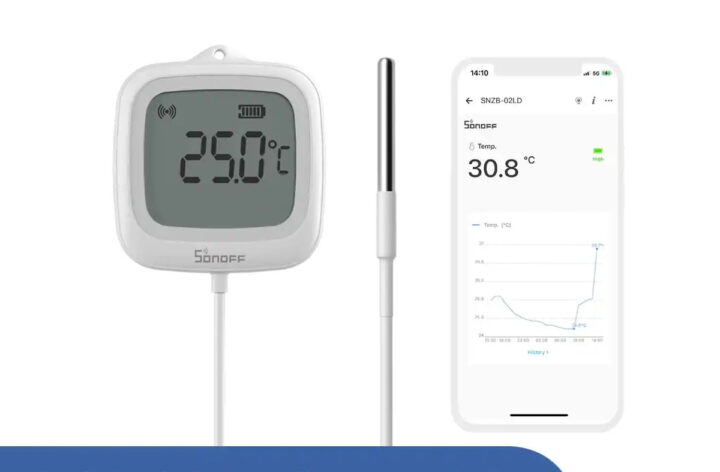
SONOFF SNZB-02WD/LD specifications:
- MCU – Telink TLSR8656F512ET32 (part of the TSL8656 family – See PDF datasheet ) Zigbee/RF4CE SoC with 32-bit RISC MCU, 64kB SRAM, 512kB internal Flash
- Display – 2.2-inch LCD
- Wireless – Zibgee 3.0 (802.15.4 radio on TSL8656)
- Temperature and Humidity sensor
- SNZB-02WD (internal)
- Temperature Range – -20°C to +60°C, ±0.5°C
- Humidity Range – 0~100% RH, ±3% RH
- SNZB-02LD (1.5m external probe)
- Temperature Range – -40°C to +115°C, ±0.5°C
- Humidity Range – Not supported
- SNZB-02WD (internal)
- Misc
- Button under bottom cover to enter pairing mode/factory reset, or switch between °C and °F
- Lanyard hole
- Input Voltage – 3V
- Battery model – CR2477 good for about two years
- Dimensions – 62.8 x 58.5 x 21.8mm (PC+ABS material)
- Weight
- SNZB-02WD – 65.6 grams
- SNZB-02LD – 86.2 grams (with probe)
- Temperature Range (Operating)
- SNZB-02WD – -20°C to +60°C
- SNZB-02LD – -10°C to +60°C
- IP rating – IP65
- Certifications – CE/FCC/ISED/RoHS
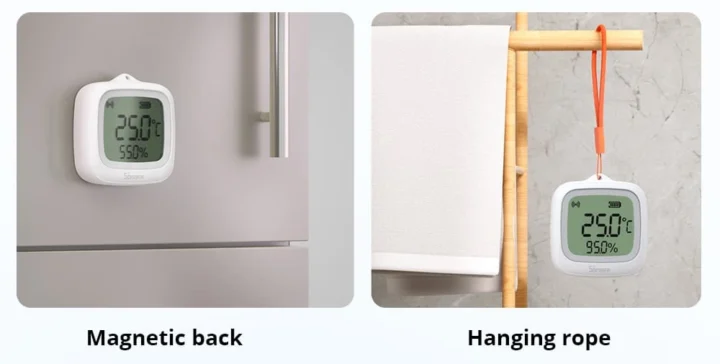
The SNZB-02WD is an updated version of the SNZB-02D, or other indoor Zigbee LCD temperature and humidity sensors, which adds IP65 weather/waterproofing so it can safely be used in a bathroom or outdoors.
Both models can be controlled with the eWelink app for real-time or historical temperature and/or humidity for up to 180 days. The mobile app also allows the users to export data, configure scenes for our aquarium or watering your plants, and supports voice commands through Amazon Alexa, Google, and so on.
The IP65-rated Zigbee LCD thermometers are compatible with a wide range of gateways, including SONOFF gateways like the Zigbee Bridge Pro, iHost, or NSPanel Pro, and third-party Zigbee gateways like Amazon Hubs, and open-source solutions such as Home Assistant and Zigbee2MQTT. But some only support a subset of the features, as you can see from the illustration below, so only some SONOFF Hubs and open-source platforms are recommended.
ITEAD takes pre-orders for the SNZB-02WD Zigbee LCD temperature and humidity sensor for $17.90, and the SNZB-02LD Zigbee 3.0 LCD thermometer goes for the same price. Both are expected to start shipping from the beginning of May. As usual, you can enter the CNXSOFTSONOFF coupon code to get a 10% discount on your order. If you prefer to wait for a review, Paisit has samples and his review with eWelink and Home Assistant should be up in the next few weeks.

Jean-Luc started CNX Software in 2010 as a part-time endeavor, before quitting his job as a software engineering manager, and starting to write daily news, and reviews full time later in 2011.
Support CNX Software! Donate via cryptocurrencies, become a Patron on Patreon, or purchase goods on Amazon or Aliexpress. We also use affiliate links in articles to earn commissions if you make a purchase after clicking on those links.


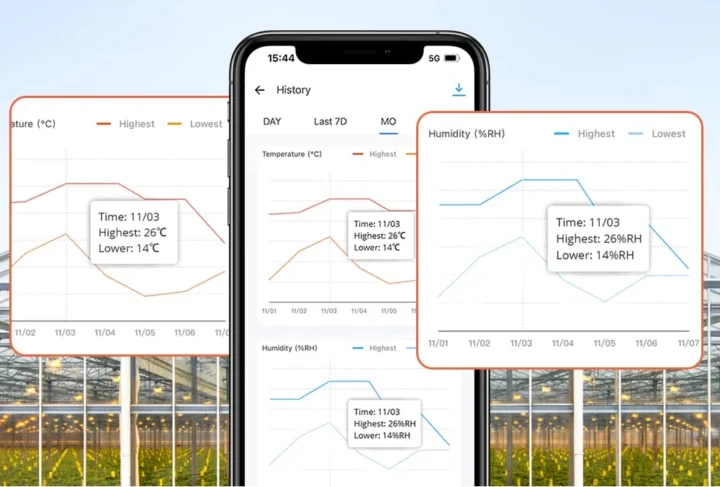
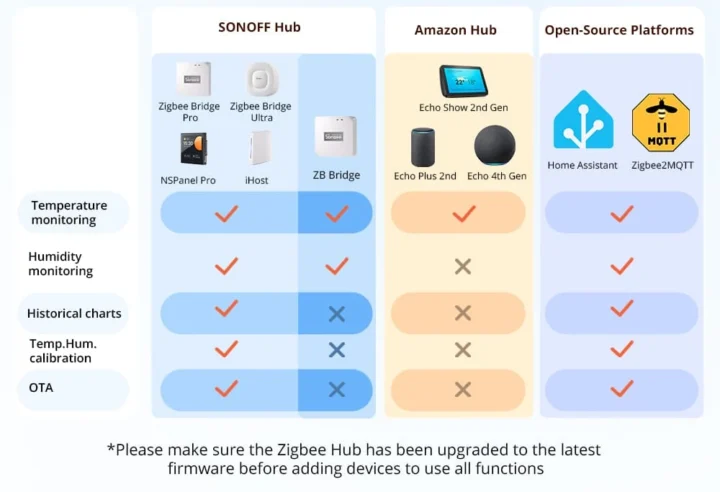
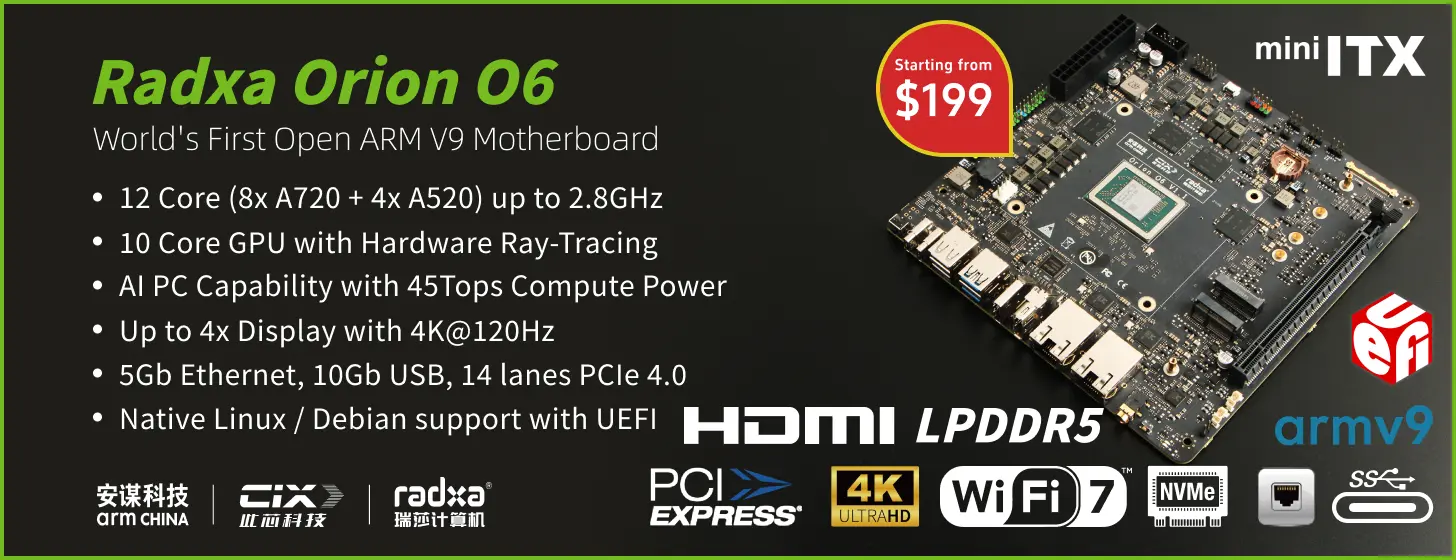


I wonder why devices intended for measuring fridge temperature do not use flexible PCBs? Seems obvious to me! Ideally, put a weak adhesive backing on the flex pcb, then you can run it under the magnetic seal without compromising the integrity of the seal at all. Alternatively, put a weak magnet underneath the sensor, and another magnet under the control unit, then you can stick them somewhere appropriate.
One company uses a flat cable for their temperature sensors, and it works very well.
https://mocreo.com/products/temperature-sensor/st4-st5/
This post and your comment are really timely for me—I had a freezer incident and am trying to add a temperature probe.
A 3- or 4-conductor flat flexible cable seems really attractive for getting through the seal. Something like the CNC Tech 310-04-0152-A maybe. But right on both sides of the seal I’d probably want to convert to something else. And I don’t know how I’d take these connectors for mounting onto a PCB and do that in a low-profile way. I also wonder if it’d pull out easily—these cables I think are really meant for the inside of electronics.
That mocreo ST5’s cable (4mm x 1.3mm) is a little smaller than the 4-conductor telephone cord I tried (something like 4.5mm x 2.5mm). That telephone cord left a much bigger disturbance in the seal than I’d anticipated. Even stripping off the jacket and just taping down the wires with shipping tape wasn’t perfect, so the mocreo’s cable might just be so-so in my case. Going down as small as that FFC’s 2.5mm x 0.32mm seems really promising if I could figure out the ends.
I don’t understand what you mean here. How does a magnet help with communicating between the sensor (inside the refrigerator/freezer, which I think would be a quite effective Faraday cage) and the control unit? Also, the inside surface of my freezer seems to be all plastic, so a magnet wouldn’t be effective.
The idea with the magnets was to use a flex pcb with the sensor on one end (to stick to a metal surface inside the fridge/freezer), and the display/transmitter on the other (to stick to a metal surface outside the fridge/freezer).
The interior of most fridges is plastic. I use low-temperature tape to mount the sensor and route the cable. It remains pliable and sticky at low temperatures. Regular tape will not hold